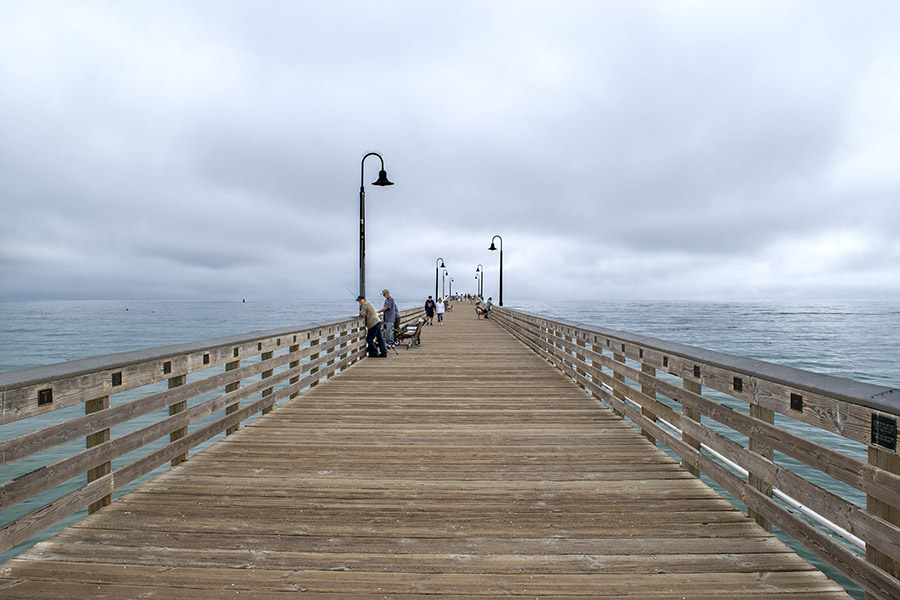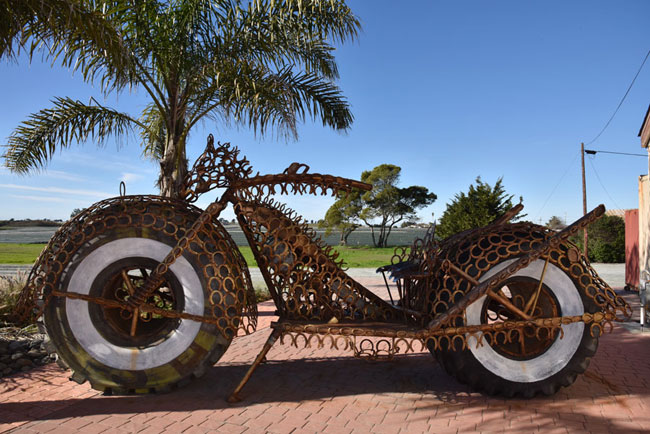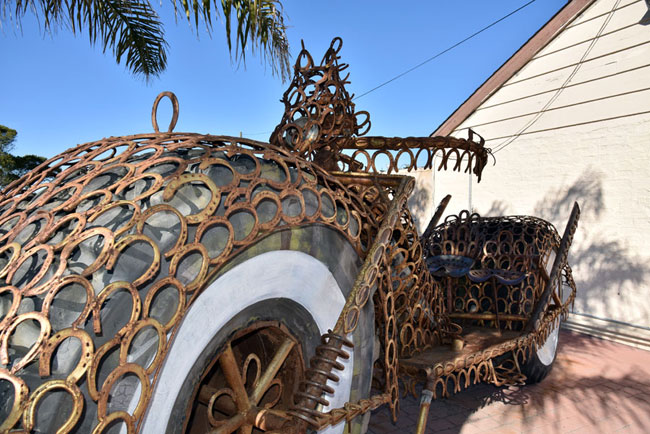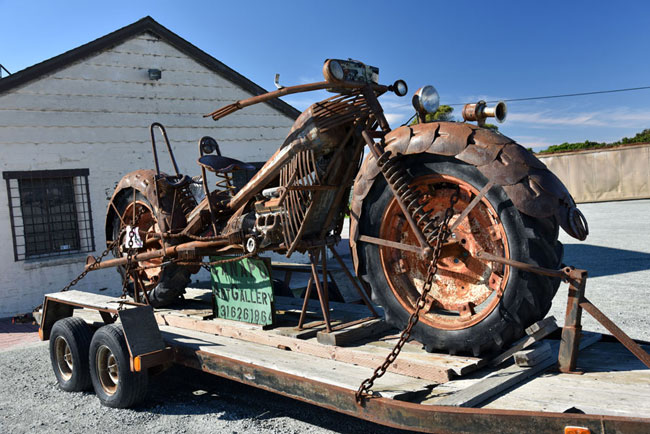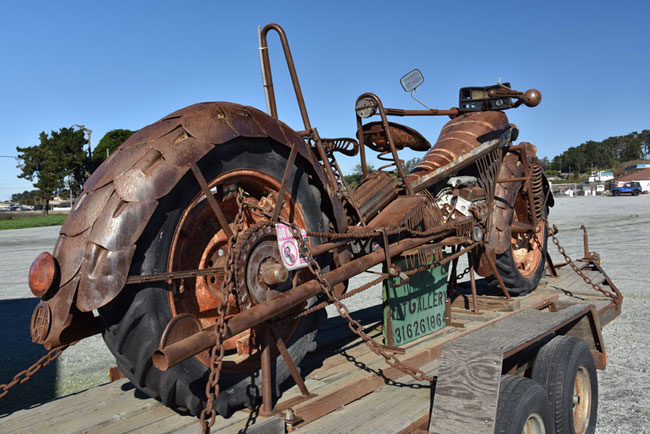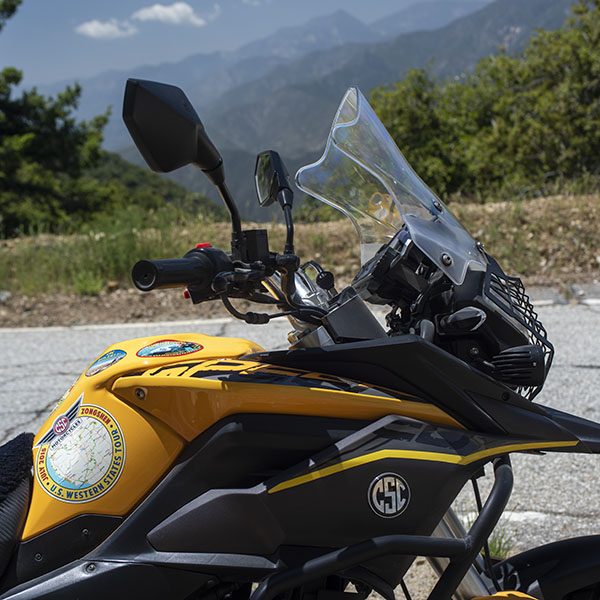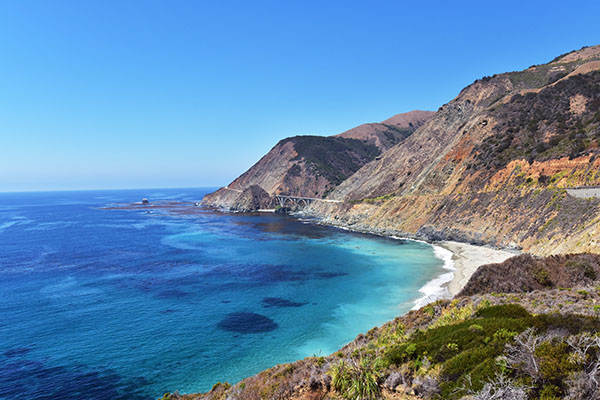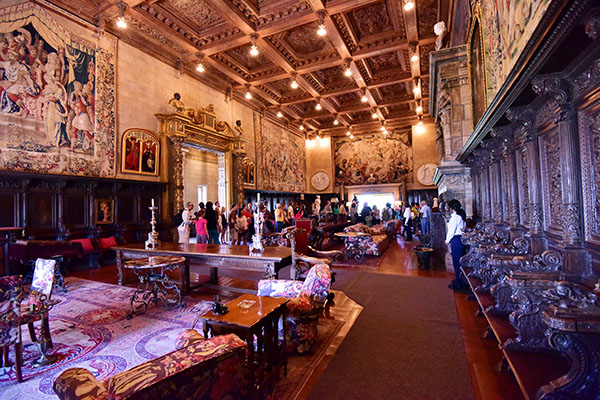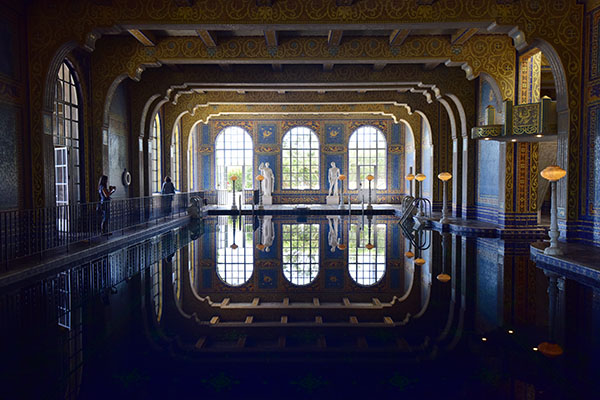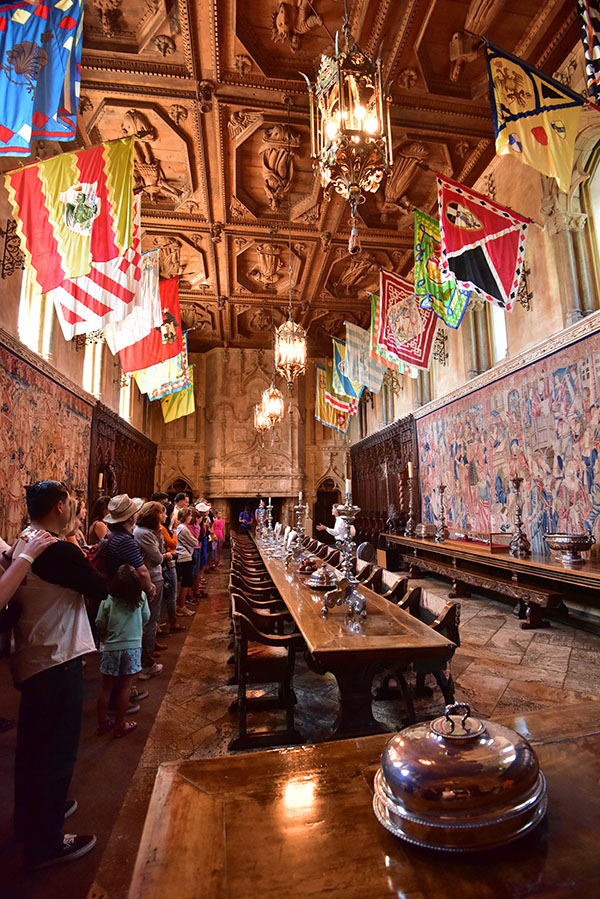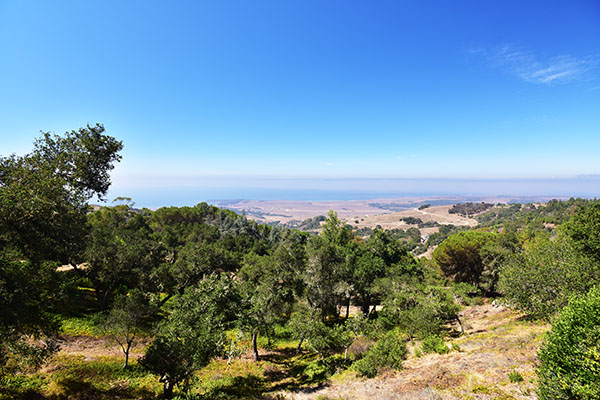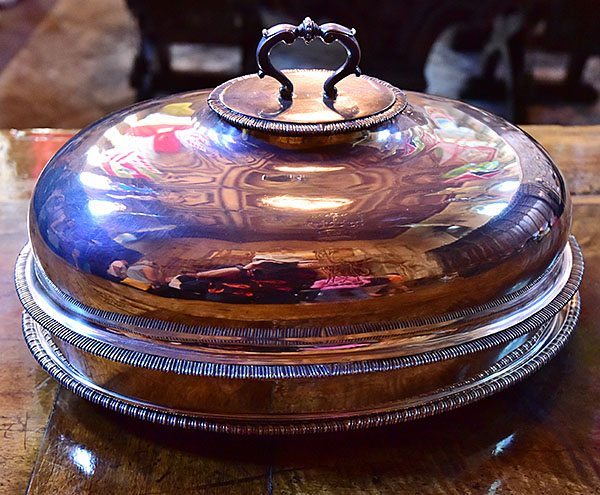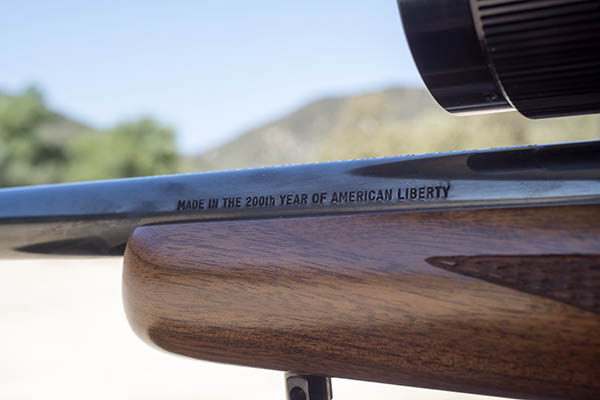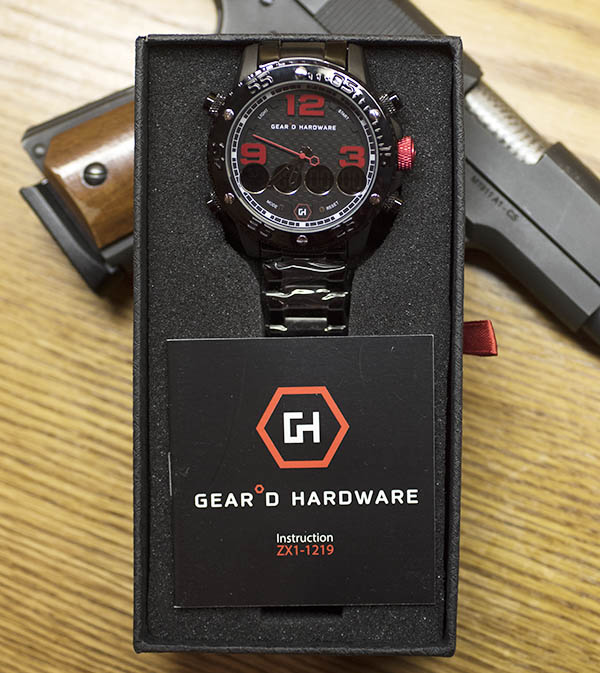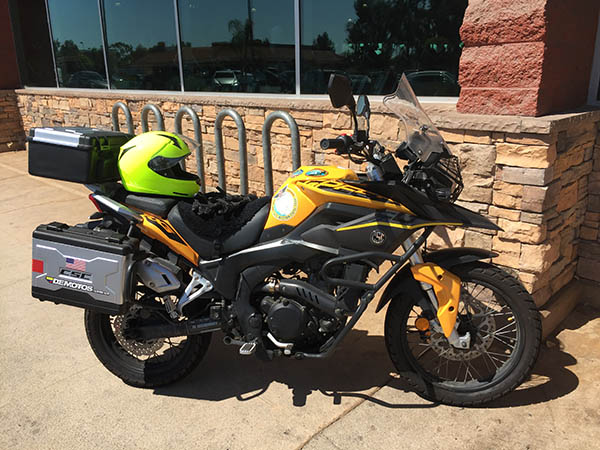California’s Pacific Coast Highway is one of the best motorcycle roads on the planet, and I never miss an opportunity to travel it. One of my favorite destinations on the Pacific Coast Highway is Hearst Castle. We’ve written about it previously here on ExNotes.
As the title of this blog implies, base camp was in Cayucos, California, instead of Cambria (more on that below). And from a photography perspective, instead of lugging around my boat-anchor, full-frame Nikon D810, I took the smaller and lighter Nikon D3300 with a “walking around” 18-55mm lens and a Rokinon 8mm (a super wide angle). I’ve been using that combination more and more lately.
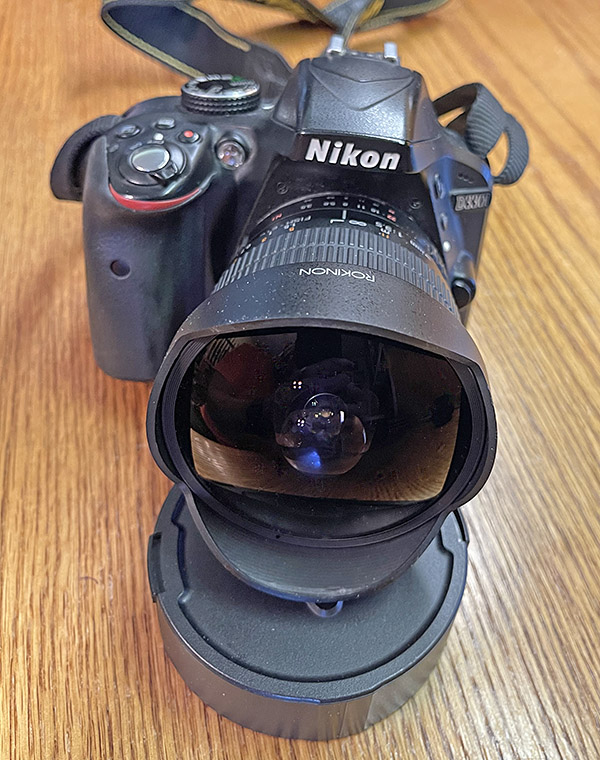
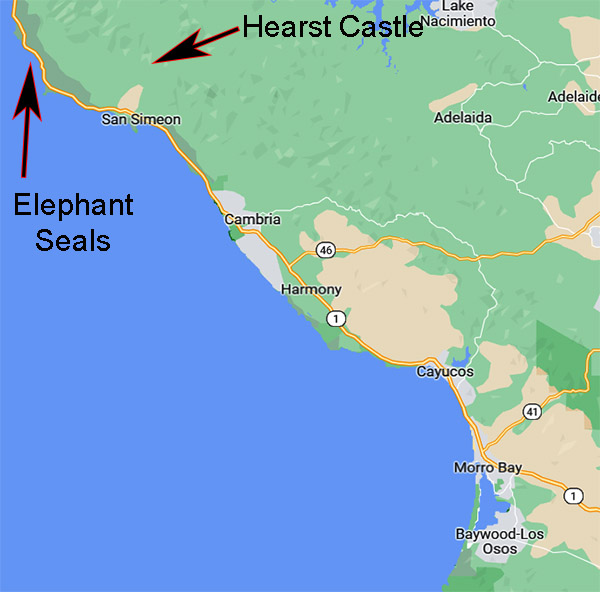
Most folks who visit Hearst Castle stay in Cambria, a touristy, kitschy spot just down the road from San Simeon (the Hearst Castle location). This time we tried Cayucos, a tiny town that’s a bit further south down the Pacific Coast Highway. It’s friendlier, less expensive, and for my money, a lot nicer and more enjoyable than Cambria. Sue and I stayed in the Sunset Inn, a bed and breakfast in Cayucos. If you’re in Cayucos, the Ludano restaurant is the place for dinner (William Randolph Hearst was a regular here while building Hearst Castle). For a more casual Cayucos dining experience, Duckie’s (near the Cayucos Pier) is an awesome walkup seafood restaurant (try the fish and chips; they were great).


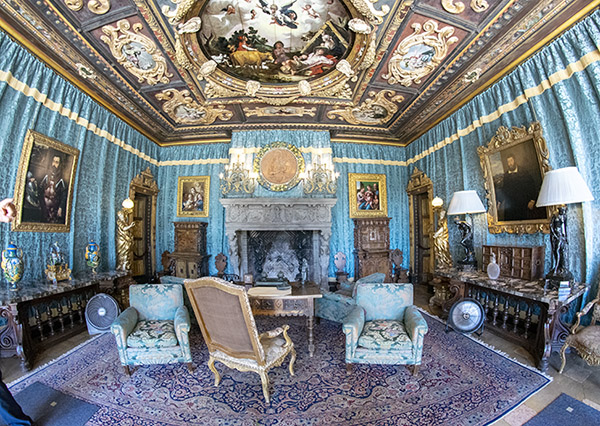

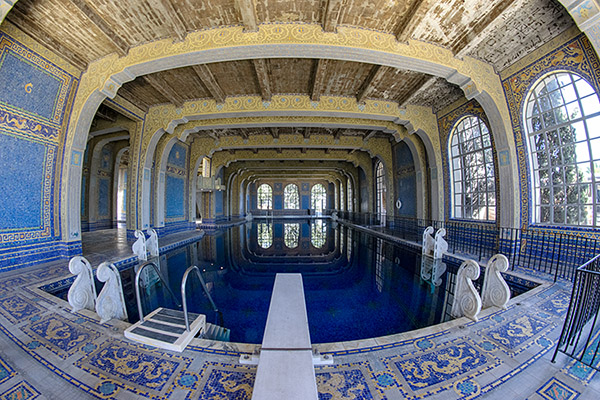
The Rokinon lens is strictly a manual affair. It doesn’t autofocus and it doesn’t work with the camera’s automatic metering features. It’s manual everything…focus, f stop, ISO, and shutter speed. The focus part was easy…I simply cranked the focus ring all the way over to infinity (with a wide-angle lens, that works). For ISO, shutter speed, and f stop, I used the camera’s histogram. Shoot, check the histogram, adjust, shoot again, check the histogram, adjust, and keep going until things are just right. Too dark, and I adjusted the shutter speed, the f stop, and the ISO until the histogram showed everything between the histogram upper and lower limits. Too light, and I made adjustments in the opposite direction. For the money, the Rokinon lens is a lot of fun, and I like the effects I get with a wide -angle lens. Some folks don’t. That’s okay. It’s my gear and these are my photos.
As mentioned earlier, I also used the Nikon 18-55mm lens on this trip. It’s not the sharpest lens but that’s okay. I’m not the sharpest matzoh in the box, either, and a matching lens fits me well. When I shoot in RAW (the camera’s capture everything, sort-it-out-later-in-Photoshop mode), the 18-55mm lens works surprisingly well, like in the photo at the top of this blog. It’s a shot of the Cayucos Pier, in which I did a little bit of post-processing to darken the sky and the water. I’m pleased with the results.
While we walked the pier, we talked to folks who were fishing from it. The fishing was good: Halibut, perch, and one fellow had landed a 4-foot shark earlier in the day (I wish I had been there when that happened; that would have been a hell of a picture).
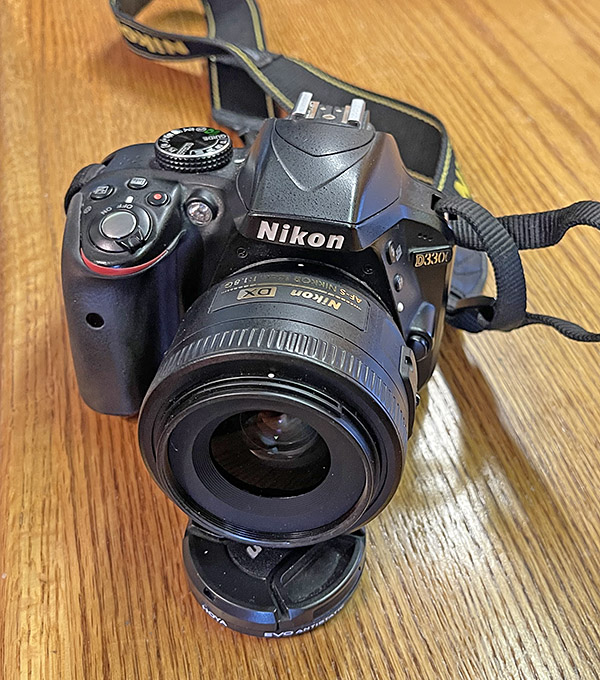
I took the photo below with the 18-55mm lens just a few miles up the Pacific Coast Highway. These are elephant seals and I liked how this photo turned out, too.
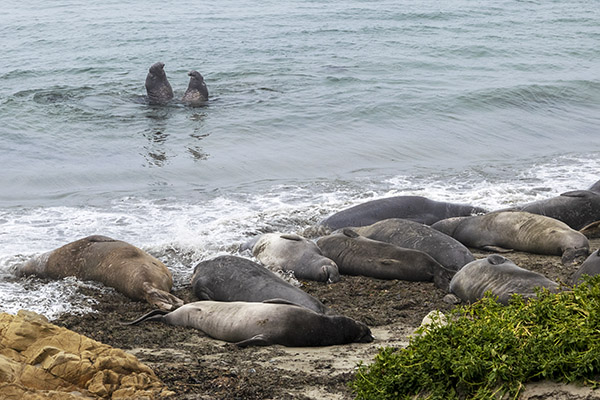
You know, the discussions about lenses, cameras, and photography can go on endlessly. Sometimes all you need is a cell phone. I was blown away by the photos Joe Gresh grabbed when he recently visited Laguna Seca after riding his Kawasaki ZRX from New Mexico. Joe shot all of those with his iPhone, which is a much easier way to go on a motorcycle. When I travel with a digital single lens reflex camera on a motorcycle, the camera and a couple of lenses steal a lot of saddlebag space. There’s advantages and disadvantages to everything, I guess.
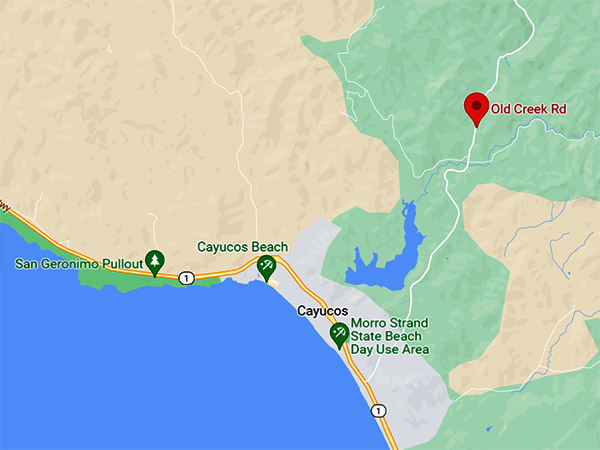
Riding the Pacific Coast Highway is a bucket list ride, and if you get an opportunity to do so, you should grab it. The area I’m describing in this blog is roughly halfway between San Francisco and Los Angeles. The Pacific Coast Highway is currently closed around Gordo (well north of San Simeon), but that still leaves a lot of nice riding on the table. One of the best rides is Old Creek Road northeast out of Cayucos. It’s a lightly traveled and grand road, full of twisties, and it cuts through the California wine country to link up with State Route 46 (another fine road through the wine country). A few miles further east, 46 intersects Highway 41, and that’s where James Dean lost his life in a car accident (there’s a sign marking the spot). There are a lot of interesting things and a lot of interesting roads in California.
More Epic Rides are here!

